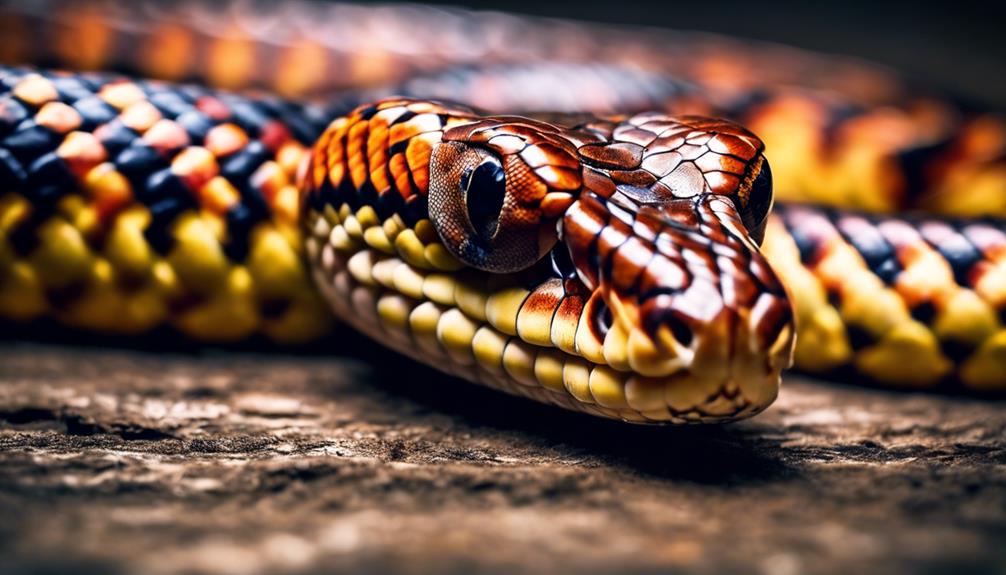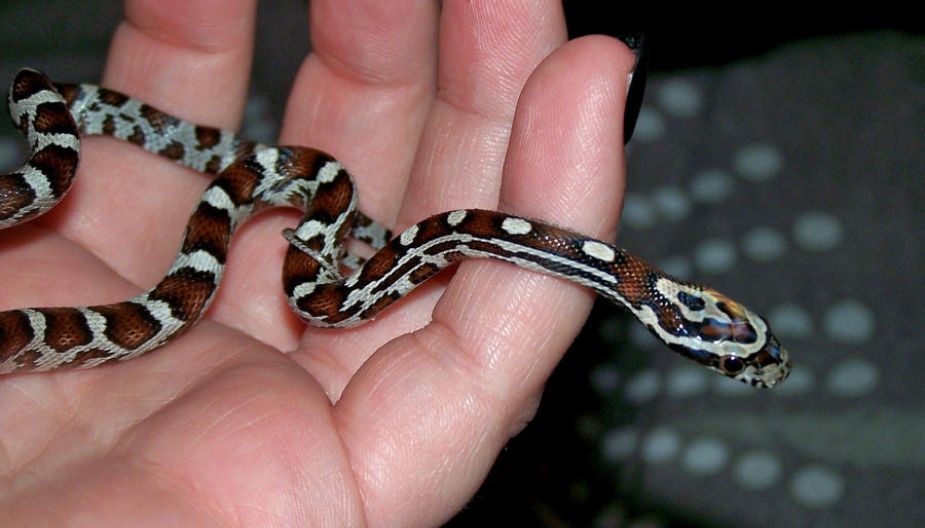Understanding the frequency of your corn snake's shedding is vital for its well-being.
It's interesting to know that the shedding frequency can fluctuate based on various factors.
Familiarizing yourself with these factors can ensure that your snake stays healthy and content.
Let's explore how factors like environmental conditions, age, and overall health dictate the shedding schedule of your corn snake.
Key Takeaways
- Young corn snakes shed every 4-6 weeks due to rapid growth.
- Adult corn snakes shed approximately every 3 months for renewal.
- Shedding process lasts 6-9 days, crucial for skin health.
- Proper humidity levels are essential for successful shedding.
Shedding Frequency of Corn Snakes
Corn snakes shed their skin at different frequencies depending on their age and growth stage. Young corn snakes shed every 4-6 weeks, while adult corn snakes shed approximately every 3 months. The shedding process, also known as ecdysis, typically lasts 6-9 days, with variations based on factors like age and health status. Young snakes shed more frequently than adults due to their rapid growth rate.
For adult corn snakes, shedding every 3 months is a normal part of their life cycle. To support this process, make sure that your snake has access to a water bowl large enough for soaking and maintains an appropriate humidity level within the enclosure. Using a humidity gauge can help you monitor and adjust humidity levels accordingly.
During shedding, pay close attention to their eye caps, as retained eye caps can lead to complications. Adequate hydration and proper humidity levels are essential for a successful shedding process in adult corn snakes.
Factors Influencing Shedding Frequency
What factors influence the shedding frequency of these snakes? Shedding frequency in corn snakes is influenced by various factors related to their care and environment. Here are some key aspects to take into account:
- Age and Growth Rate: Young corn snakes shed more frequently, typically every 4-6 weeks, to support their rapid growth and development. Adult corn snakes shed less often, usually every 3 months, as they reach maturity.
- Health Status: The overall health of the corn snake plays an important role in shedding frequency. A healthy snake is more likely to shed regularly and smoothly compared to a snake facing health issues.
- Environmental Factors: Factors like temperature and humidity levels in the snake's habitat directly impact shedding. Maintaining ideal conditions is essential for ensuring the snake can shed its skin properly.
- Diet: A proper diet is necessary for healthy shedding. Adequate hydration and nutrition help the snake maintain its skin quality and shed as needed.
Taking these factors into account in your corn snake care routine can help promote regular shedding and overall well-being for your pet.
Shedding Process in Corn Snakes
During the shedding process in corn snakes, known scientifically as ecdysis, the reptiles undergo a natural renewal of their skin to replace old skin cells. Juvenile corn snakes shed more frequently, about every 4-6 weeks, compared to adults who shed every 3 months. This difference in shedding frequency is linked to the rapid growth that young snakes experience, necessitating more regular shedding to accommodate their growth.
The shedding process typically lasts 6-9 days. One interesting aspect of the shedding process is that a few days before shedding, the snakes' eyes may appear cloudy or blue due to a fluid buildup between the old and new skin layers. Providing a humid hide or a shallow dish of warm water can help facilitate the shedding process by allowing the snake to moisten its skin and aid in shedding smoothly.
Understanding the shedding process is crucial for corn snake owners to guarantee the health and well-being of their pet reptiles.
Recognizing Signs of Shedding
To identify when your corn snake is preparing to shed its skin, observe for subtle yet distinct physical and behavioral cues. Here are four signs to look out for:
- Cloudy, Blue-ish Eyes: One of the earliest indicators of imminent shedding is when your corn snake's eyes appear cloudy and bluish. This is due to a fluid build-up between the old and new skin layers.
- Dull Skin: Before shedding, your snake's skin will lose its usual vibrant sheen and appear dull. This change in skin appearance is a clear signal that shedding is on the horizon.
- Increased Hiding: If you notice your corn snake spending more time hiding than usual, it could be a sign that shedding is approaching. Snakes often seek seclusion when preparing to shed their skin.
- Decreased Appetite: A decrease in appetite is another common sign that your corn snake is getting ready to shed. This reduced interest in food is a natural part of the shedding process as the snake's focus shifts towards shedding its skin.
Tips for Supporting Shedding Corn Snakes
When supporting shedding corn snakes, make sure to provide appropriate environmental conditions to facilitate the shedding process effectively. Corn snakes make great pets, and ensuring they shed their skin properly is vital for their health.
To assist your corn snake in shedding, provide a suitable habitat with firm bark, stones, and a humid hide. Maintaining appropriate humidity levels between 40-60% is essential to help soften the old skin for easier shedding. Additionally, offering a shallow dish of warm water for your snake to soak in can aid in loosening the skin.
It's important to avoid peeling off the old skin yourself, as this can cause injuries and complications. If your corn snake experiences shedding issues like retained eye caps, seek veterinary care promptly to address any concerns and ensure your snake's well-being.
Frequently Asked Questions
Is It OK to Hold My Corn Snake While Its Shedding?
While it's shedding, avoid holding your corn snake. Handling during shedding can cause skin irritation and disrupt the shedding process. Wait for complete shedding before handling. Provide proper hydration, gentle touch, and space for a healthy shedding cycle.
How Do I Know When My Corn Snake Is About to Shed?
When your corn snake is about to shed, monitor for cloudy eyes, increased hiding, dull skin, and decreased appetite. Providing a rough surface and warm water helps. Make sure proper humidity levels and monitor pre-shedding behavior for a healthy shedding cycle.
Why Is My Corn Snake Not Shedding Properly?
If your corn snake isn't shedding properly, skin issues may arise. Inadequate humidity levels, stress factors, or retained eye caps can lead to shedding problems. Consider bathing methods, shedding aids, and vet consultation to address skin infections effectively.
How Often Should I Clean Out My Corn Snake?
You should clean out your corn snake's habitat weekly to maintain cage hygiene. Use appropriate cleaning supplies for best disinfection. Make sure proper ventilation to control odors and prevent mold. Regular maintenance promotes a healthy environment.
Conclusion
In summary, understanding the shedding frequency of your corn snake is essential for their overall health and well-being. By recognizing the signs of shedding and providing proper care and support during this natural process, you can guarantee your snake remains healthy and vibrant.
So, next time you see those cloudy eyes and dull skin, ask yourself, are you ready to help your corn snake shed like a pro?


